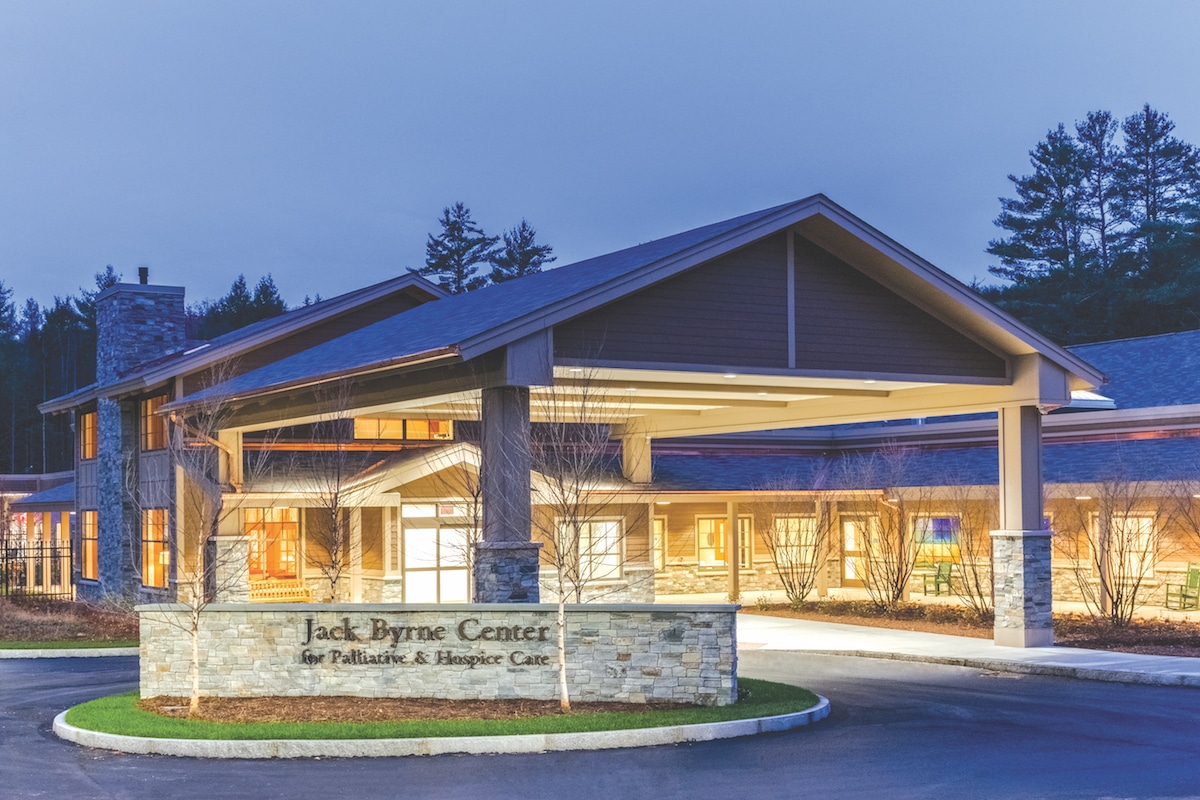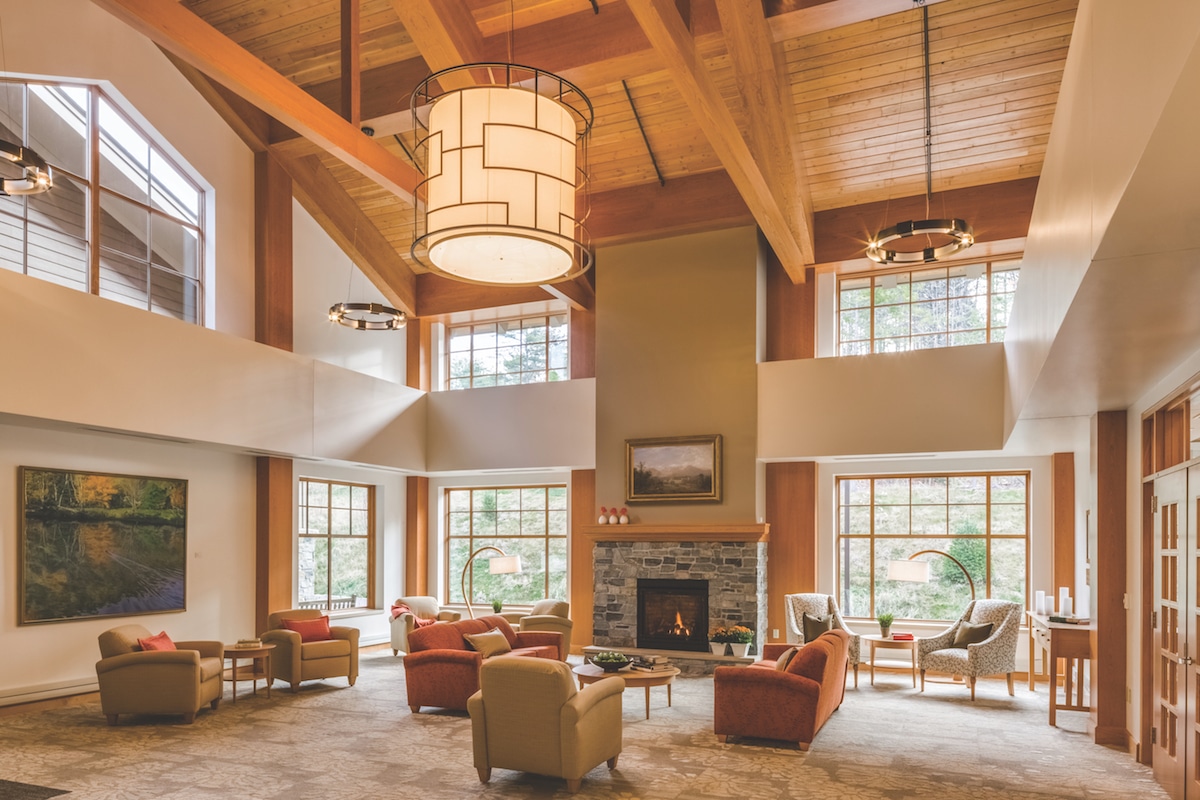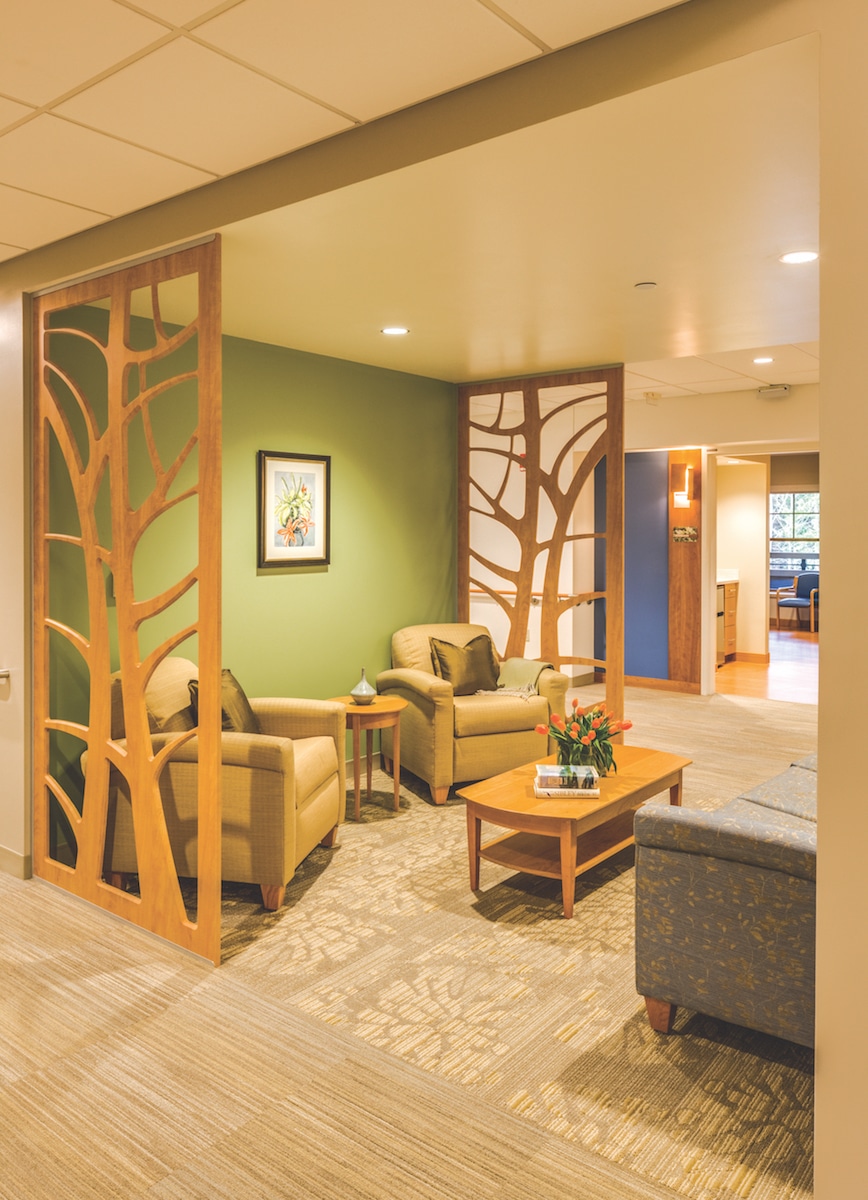
[Photo: Courtesy of E4H Environments for Health Architecture]
E4H Architecture was formed in 2016 when three of the country’s top health care architecture firms merged, and it has more than three decades of experience designing for health care settings—the E4H stands for “environments in health.” And yet, when the Dartmouth-Hitchcock Health System hired the firm to design the Jack Byrne Center for Palliative and Hospice Care, they were in for a unique challenge.
Of course, health care centers around the country provide hospice and palliative care to terminally ill patients at the end of life, but very few of them build inpatient hospice centers quite like this one. Born from a $10 million gift from the Jack and Dorothy Byrne Foundation in 2014, the center is designed to give families ample space and privacy during their loved ones’ last days, and to provide services catered toward their needs. It also acts as a hub for education and research on hospice and palliative care.

[Photo: Courtesy of E4H Environments for Health Architecture]

The center has plenty of gathering spaces, plus ample natural light. [Photo: Courtesy of E4H Environments for Health Architecture]
Where do most people want to be at the end of their lives? “Many want to stay at home,” says Charles Rizza, an associate partner at E4H. But that’s not always practical because of the specialized care many patients require, from a bulky hospital bed to round-the-clock nursing assistance. Rizza says, “How do you design a facility that meets all these needs but hides a lot of it so you’re not seeing the technology, and has some of the components that make home so comfortable for patients and families?”
The answer came in the form of a 30,000-square-foot facility that opened in December 2017, with 12 single-occupancy patient rooms and space for overnight guests. The center has a kitchen and dining room where families can prepare and enjoy a meal. There’s also a library, a spa, a children’s play space, and rooms for meditation, massage, exercise, and art therapy. “All of these are attributes that you don’t typically find in a hospital or that you can’t have at home with caregivers,” Rizza says. The entire building is also designed to foster a connection with nature. Large windows provide ample natural light, and you’ll find stone and wood accents throughout. Each suite includes a private balcony.

[Photo: Courtesy of E4H Environments for Health Architecture]
The design team was committed to efficiency, both to reduce the environmental impact and to ensure the center will remain financially viable years into the future. “The ironic thing about talking about sustainability and the Jack Byrne Center is that, in general, hospices are operationally non-sustainable,” Rizza says. Hospice centers provide care that is critically important but unprofitable, and they often rely on charitable gifts and associations with broader hospital systems to survive.
That’s why the design team placed a special emphasis on creating a building that will operate cost-effectively for years to come. To that end, the building uses a geothermal heating and cooling system, which significantly reduces costs—a win for any new building, but especially a health care center, where energy loads are huge. Even the back-up power system is an energy-efficient gas boiler.
When choosing building materials, the team carefully married its mandate to utilize green building principles with the importance of cost-efficiency. Materials are low-maintenance and have long life expectancies, but they’re also non-toxic and designed to be recycled or reclaimed at the end of their lives at Jack Byrne. Rizza says, “Why would we use products that emit toxic gas or are not friendly to the touch, if the environment that we’re creating is geared toward wellness?”

[Photo: Courtesy of E4H Environments for Health Architecture]
Read more gb&d healthcare facility stories.

